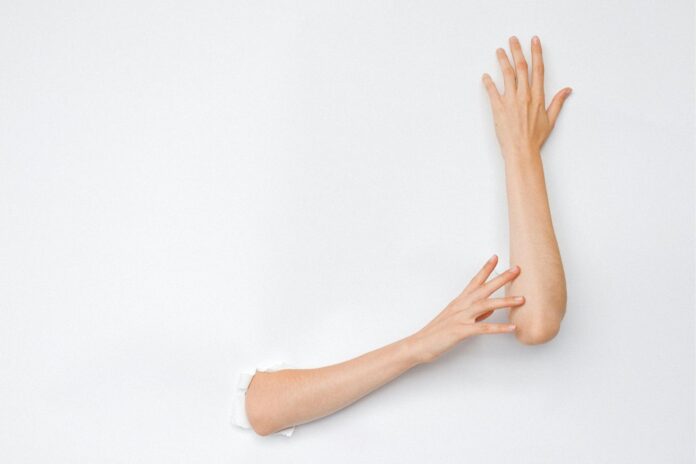For centuries, the difference between left-handed & right-handed people has sparked curiosity, debates & even superstitions. From old cultural beliefs to scientific studies, the dominance of one hand over the other has influenced how we write, eat, work & perceive the world. But in today’s modern society, with more awareness & inclusivity, it is time to take a deeper look into the left-hand vs. right-hand debate and, perhaps, settle it once & for all.
The Basics: What Is Handedness?
Handedness refers to the preference most people show for using one hand over the other to perform tasks like writing, throwing, or eating. About 90% of the global population is right-handed, leaving around 10% who are left-handed. This ratio has been consistent across cultures & eras, suggesting a biological basis for handedness.
While handedness appears to be influenced by genetics, it is not as straightforward as inheriting eye or hair color. Environment, brain asymmetry & even prenatal development can affect which hand becomes dominant.
The Science Behind It
Studies have shown that handedness is linked to the way our brains are wired. The brain is divided into two hemispheres, each controlling the opposite side of the body. In most right-handed people, the left hemisphere (which controls the right side of the body) is dominant for functions like language, reasoning & logic. Interestingly, left-handed individuals often have a more symmetrical brain structure & may distribute cognitive functions more evenly across both hemispheres.
This neurological difference has led researchers to explore whether left-handed people are more creative, better at sports, or think differently than right-handers. While results vary, some studies do suggest that lefties may be more adept at divergent thinking, which is a key element in creativity.
Left-Handed Struggles in a Right-Handed World
Let us be honest – the world is designed for right-handed people. From scissors & can openers to desks & door handles, left-handed folks often have to adjust or struggle with tools that don’t cater to their needs. Even writing in a notebook can be uncomfortable due to smudging ink or awkward hand angles.
Historically, left-handedness wasn’t just inconvenient – it was stigmatized. In many cultures, using the left hand was seen as wrong or even “evil.” The Latin word sinister, which originally meant “left,” evolved to mean something suspicious or harmful. Many left-handed children were forced to switch to their right hand, leading to difficulties with learning & coordination.
Thankfully, those days are mostly behind us & being left-handed is no longer seen as abnormal. In fact, it is increasingly celebrated.
Right-Handed Realities
Being right-handed comes with certain privileges, often unnoticed by those who benefit from them. Right-handers can easily use everyday objects, find desks suited for them in classrooms & avoid the smudge problems left-handers face when writing in languages written left to right.
However, this doesn’t mean right-handed people have it easy across the board. Tasks that require symmetrical hand use – like playing musical instruments or typing – demand ambidexterity to some extent, even from right-dominant individuals.
What’s more, right-handedness doesn’t automatically equate to being more logical or practical – just as left-handedness doesn’t mean you’re more artistic or unusual. These are stereotypes we should all work to break.
Myths vs. Facts
There are numerous myths about left- & right-handed people. Let us debunk a few:
Myth #1: Left-handed people are more creative.
Fact: While some lefties excel in creative fields, there’s no definitive proof that left-handedness causes creativity. Environment, education & personality play much bigger roles.
Myth #2: Right-handed people are more logical.
Fact: Again, brain function isn’t that black & white. Many left-handers are brilliant scientists & engineers.
Myth #3: Left-handed people die earlier.
Fact: This myth was based on flawed research. There’s no credible evidence showing that handedness affects life expectancy.
Myth #4: You can train a child to switch handedness without harm.
Fact: Forcing a naturally left-handed child to switch hands can lead to learning difficulties, stuttering & confusion.
Famous Left-Handers & Right-Handers
Let us celebrate some famous names from both sides to highlight that greatness comes in all forms:
Famous Left-Handers:
- Leonardo da Vinci (Artist/Inventor)
- Oprah Winfrey (Media Mogul)
- Barack Obama (Former U.S. President)
- Marie Curie (Physicist/Chemist)
- Lionel Messi (Footballer)
Famous Right-Handers:
- Albert Einstein (Physicist)
- Mahatma Gandhi (Freedom Fighter)
- Taylor Swift (Musician)
- Elon Musk (Entrepreneur)
- Serena Williams (Tennis Champion)
These examples show that handedness doesn’t limit success – it is just part of who we are.
Ambidextrous: The Best of Both Worlds?
Some people are ambidextrous, meaning they can use both hands equally well. While this is rare, ambidexterity can be developed through training & necessity. For instance, someone might become proficient with both hands due to injury or specific professional demands (think musicians, surgeons, or athletes).
Interestingly, ambidextrous people may have certain cognitive advantages, but they can also be more prone to distraction or mental fatigue. Like everything else, it is a trade-off.
Embracing the Difference
Instead of treating handedness as a competition or hierarchy, we should see it as a fascinating example of human diversity. Whether you’re left-handed, right-handed, or somewhere in between, your dominant hand is a reflection of your unique brain & life experience.
In schools, workplaces & homes, providing ambidextrous tools & inclusive environments benefits everyone. Parents should be encouraged to let children develop their natural handedness. Teachers & designers can consider ergonomic options for all users. Even simple acts – like offering left-handed scissors or rearranging a workspace – can make a world of difference.
Final Thoughts: So, Who Wins?
If you were hoping for a clear winner in the “Left Hand vs Right Hand” debate, here’s the truth: there isn’t one. Each side has its advantages, challenges & fascinating quirks. It is not about which hand you use – it is about how you use it.
So, let us stop trying to settle this as a battle & start celebrating it as a beautiful part of what makes humanity so diverse & interesting. Whether you high-five with your right or left, what truly matters is the kindness, creativity & capability in your hands.
Call to Action
Next time you see someone struggling with a right-handed tool or awkward writing desk, offer a hand – left or right. & if you’re a parent, teacher, or manager, think about how your environment supports all types of handedness. Inclusion starts in the smallest of gestures – quite literally at your fingertips.




